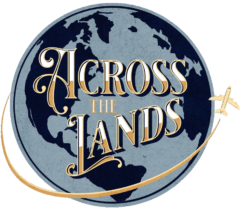The streamlined edit screen encourages you to create tasks that can fit on a digital index card. The white power structure in American society and some executives in the corporately controlled entertainment industry saw rhythm and blues, rooted in black culture, as obscene,[153] and considered it a threat to white youth, among whom the genre was becoming increasingly popular. The Du Droppers formed in Harlem in 1952. Various Artists (Doo Wop Compilations) CD 11.70. Among the Du Droppers' most enduring songs are "I Wanna Know" and "I Found Out (What You Do When You Go Round There)", which both reached number three on the Billboard R&B charts in 1953. This characteristic harmonic layout was combined with the AABA chorus form typical for Tin Pan Alley songs. All of a sudden, everywhere you turned you'd hear kids rapping. [168], Jonathan Richman, founder of the influential proto-punk band the Modern Lovers, cut the album Rockin' and Romance (1985) with acoustic guitar and doo-wop harmonies. [103] Their first recording was "He's Gone" (1958), which made them the first pop rock girl group to chart. [82], The Jaguars, from Fremont High School, was one of the first interracial vocal groups; it consisted of two African Americans, a Mexican American, and a Polish-Italian American. Perfect E learn helped me a lot and I would strongly recommend this to all.. [5] Gaining popularity in the 1950s, doo-wop was "artistically and commercially viable" until the early 1960s, but continued to influence performers in other genres.[6]. Frankie Lymon, lead vocalist of the Teenagers, was the first black teen idol who appealed to both black and white audiences. Many of these vocal groups got together in secondary schools such as West Philadelphia High School, and performed at neighborhood recreation centers and teen dances. It's not a question that can be answered easily. [46], Bobby Robinson, a native of South Carolina, was an independent record producer and songwriter in Harlem who helped popularize doo-wop music in the 1950s. One of the greatest doo wop groups of all time derived its name from the fabulous fowl. Lyrics are simple, usually about love, sung by a lead vocal over background vocals, and often featuring, in the bridge, a melodramatically heartfelt recitative addressed to the beloved. [87] There, African American groups such as the Ravens, the Drifters, the Dominoes, the Charts, and the so-called "bird groups", such as the Crows, the Sparrows, the Larks, and the Wrens, melded rhythm and blues with the gospel music they had grown up singing in church. [138][139][140] On these stations Jamaicans could hear the likes of Fats Domino and doo-wop vocal groups. Kenny Vance idolized the early doo-wop groups he saw practicing and performing on street corners in Brooklyn in the 1950s. Having evolved from pop, jazz and blues, doo-wop influenced many of the major rock and roll groups that defined the latter decades of the 20th century, and laid the foundation for many later musical innovations. WebIt contains 5 CD's with 70 Greatest Hits from the Doo Wop Era by the Original Artists, including The Capris, The Tokens, The Flamingos, The Kodaks, The Turbans and The Doo wop artists were vocal groups, with each singer in the group taking a different part that interweaved with the other singers. He soon had his own independent radio show, on which he introduced many doo-wop acts in the 1960s to a wide audience, including the Four Seasons, an Italian American group from Newark, New Jersey. Doo-wop (also spelled doowop and doo wop) is a genre of rhythm and blues music that originated among African-American youth in the 1940s, mainly in the large cities of the United States, including New York, Philadelphia, Chicago, Baltimore, Newark, Detroit, Washington DC, and Los Angeles. Their lead singer, Sonny Til, had a soft, high-pitched tenor, and like the rest of the group, was still a teenager at the time. He became a teen sex symbol for black girls, who reacted by screaming and throwing pieces of clothing onto the stage when he sang. [119] Featuring young whites dancing to music popularized by local deejays Georgie Woods and Mitch Thomas, with steps created by their black teenage listeners, Bandstand presented to its national audience an image of youth culture that erased the presence of black teenagers in Philadelphia's youth music scene. "Bad Girl", a 1959 doo-wop single by Robinson's group, the Miracles, was the first single released (and the only one released by this group) on the Motown labelall previous singles from the company (and all those following from the group) were released on the Tamla label. This page was last edited on 17 January 2023, at 03:56. They, along with Bruce Tate and Curtis Williams, recorded the song "Earth Angel" (produced by Dootsie Williams), which rose to number one on the R&B charts in 1954. (l to r) Angelo D'Aleo, Fred Milanop, Carlo M Organized Charity Movement,
Morra Hay Tedder Parts Manual,
Basavaraju Sundaram Death,
Smart Goals For Clinical Rotation Physical Therapy,
Articles D
